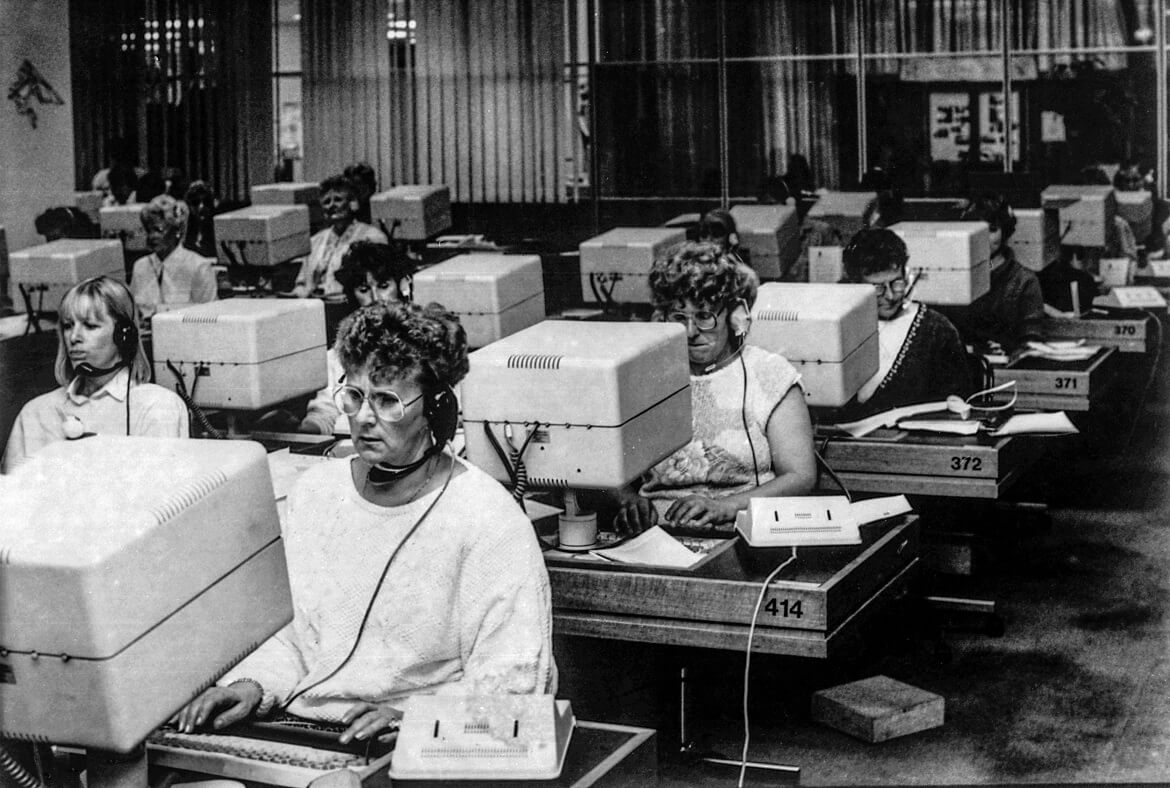Until the mid-twentieth century the crafts of the composing room defined the printing industry, with Linotype operators setting the stories, pieceworkers casting the headings, gravure workers processing photographs and artwork, while compositors made up the pages and proofed them. But from the 1960s change was rapid. Typesetting computers, video display terminals (VDTs) and photo-setting machines dramatically reduced the need for composing staff. Compositing trades vanished entirely with the introduction of computers and desktop publishing in the 1980s. Historian Jesse Adams Stein summarises this point:
In the second half of the twentieth century the printing industry - which had long been seen as a stalwart bastion of craft control – was confronted by the need to engage with increasingly automated (and later computerized) technologies. Long after many other manufacturing industries had undergone almost complete automation, printing industry employers gradually began to introduce offset-lithography, electronic phototypesetting and automated binding, in order to speed up production (transitions that often involved complex industrial relations disputes). The introduction of newer technologies in typesetting, press- machining and bookbinding resulted in the swift disappearance of specific printing trades and associated job losses, particularly in the period between the 1960s and the 1980s. In the press-room, heavy iron letterpresses – some of which were still based on nineteenth-century models – were dismantled and sold as scrap metal, replaced by high-speed offset-lithographic equipment.
The print industry continues to embrace new publishing methods and machinery. And the way we get our news is still changing. Many news stories are now published exclusively online – eliminating the need to print entirely. The COVID-19 pandemic and its associated shutdown has had a particular impact on jobs. Many consumers transitioned to online markets, reducing the demand for printed advertising materials.
The Age classified advertising department, by unknown photographer, c.1980
Reproduced courtesy The Age
From the 1980s, with the introduction of new typesetting technologies, The Age employed a significant number of women, particularly in the classified-advertising room. The compositors’ labour was transformed overnight. According to Jesse Adams Stein:
Before the compositing trade disappeared entirely in the mid- to late 1980s (due to the growth of desktop publishing, removing the need for a compositor to double-handle type), compositing was seen as an utterly transformed trade – from a masculine, skilled craft, into a feminized (and thus undervalued) clerical role.

